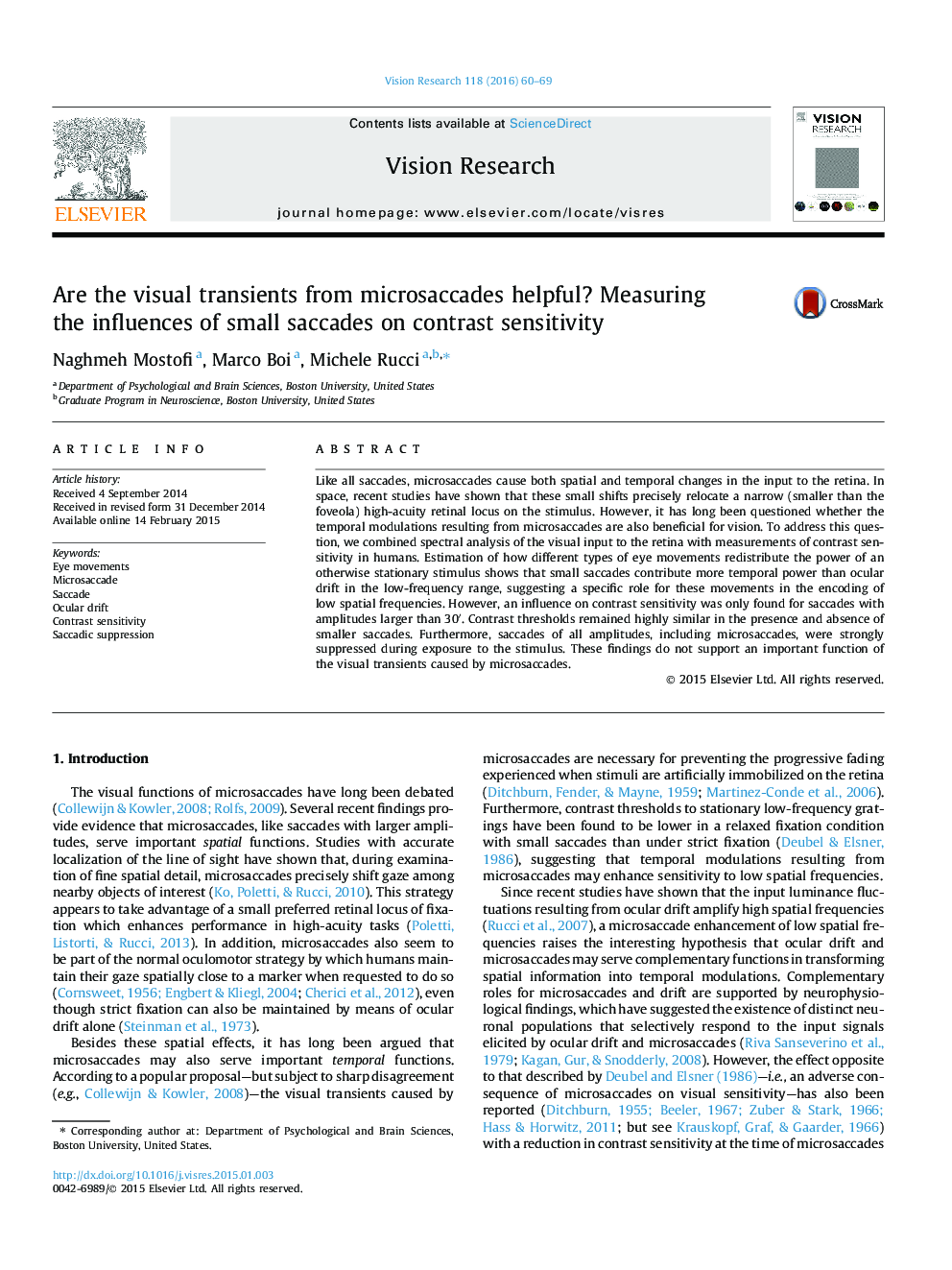| Article ID | Journal | Published Year | Pages | File Type |
|---|---|---|---|---|
| 4033581 | Vision Research | 2016 | 10 Pages |
•Visual transients from microsaccades do not improve contrast sensitivity.•Small saccades improve sensitivity to low, but not high, spatial frequencies.•Saccades/microsaccades are suppressed during viewing of near-threshold stimuli.
Like all saccades, microsaccades cause both spatial and temporal changes in the input to the retina. In space, recent studies have shown that these small shifts precisely relocate a narrow (smaller than the foveola) high-acuity retinal locus on the stimulus. However, it has long been questioned whether the temporal modulations resulting from microsaccades are also beneficial for vision. To address this question, we combined spectral analysis of the visual input to the retina with measurements of contrast sensitivity in humans. Estimation of how different types of eye movements redistribute the power of an otherwise stationary stimulus shows that small saccades contribute more temporal power than ocular drift in the low-frequency range, suggesting a specific role for these movements in the encoding of low spatial frequencies. However, an influence on contrast sensitivity was only found for saccades with amplitudes larger than 30′. Contrast thresholds remained highly similar in the presence and absence of smaller saccades. Furthermore, saccades of all amplitudes, including microsaccades, were strongly suppressed during exposure to the stimulus. These findings do not support an important function of the visual transients caused by microsaccades.
